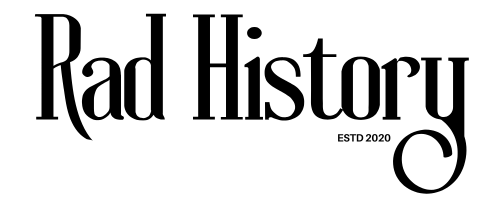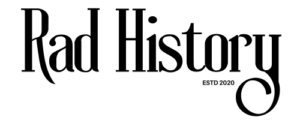Are you leaving money on the table just because you didn’t know it was there? From side hustlers juggling gig work to nine-to-fivers drowning in student loans, most millennials are grinding harder than ever—yet many are missing out on programs that could seriously ease the pressure. The kicker? These programs already exist. They’re legit. And chances are, you qualify. You’ve just never been told how (or where) to look.
It’s time to talk about overlooked safety nets that don’t require jumping through flaming bureaucratic hoops. Whether you’re renting, repaying debt, or just trying to stay insured, these under-the-radar resources are designed to help people exactly like you.
1. Student Loan Forgiveness (That’s Actually Happening)
You’ve heard the headlines about sweeping loan forgiveness being debated into oblivion, but what about the programs that are already active?
- Public Service Loan Forgiveness (PSLF): If you work in government, nonprofit, education, or even certain healthcare jobs, and make 120 qualifying payments, your remaining federal loan balance can be wiped out. No, it’s not a myth.
- Income-Driven Repayment Forgiveness: Even if PSLF isn’t for you, federal repayment plans like SAVE or PAYE offer eventual forgiveness after 20–25 years of payments. Not glamorous, but real.
- Temporary waivers and adjustments: Due to past servicing errors, some borrowers are getting months or years of credit toward forgiveness automatically. Check your account on studentaid.gov to see if you’re one of them.
2. Money for Renters Who Qualify Quietly
Rental assistance isn’t just for emergencies—though those qualify too. Local and state programs often have recurring housing subsidies for working adults whose incomes don’t quite match the local cost of living.
- Housing Choice Vouchers (Section 8): Not just for the deeply impoverished, these can apply to people earning well below the median income in high-cost areas.
- State and city-run rental relief: Especially post-crisis, many municipalities quietly opened rental assistance portals to help people stay housed. The funds are often still available—if you can find the right portal.
- Utility payment programs: Programs like LIHEAP or Emergency Rental Assistance may also cover heating, cooling, and internet bills for eligible renters.
3. Healthcare Subsidies That Actually Slash Premiums
If you’ve been ignoring marketplace health plans because you assume they’re overpriced, it’s worth a second look. The rules changed—and they favor you.
- ACA Marketplace Subsidies: Thanks to expanded eligibility thresholds, even mid-income earners are getting large premium reductions (in some cases, $0 plans with decent coverage).
- Medicaid Expansion: In many states, it now covers low-income adults without children—something that wasn’t true a decade ago.
- State-sponsored plans: Some states operate their own marketplaces and offer even better deals than federal exchanges.
4. First-Time Homebuyer Programs That Don’t Require a 20% Down Payment
You don’t need rich parents or a six-figure salary to own a home. Seriously. There are programs—real ones—that can get you in the door (literally) with as little as 3% down and no PMI.
- FHA Loans: Designed for first-time buyers with average credit, they offer low down payments and flexible income requirements.
- Down Payment Assistance Grants: Cities and states offer thousands of dollars in grants or forgivable loans to help you cover that down payment and closing costs.
- Good Neighbor Next Door: If you’re a teacher, firefighter, law enforcement officer, or EMT, you may be able to snag homes at 50% off their list price in revitalization areas.
5. Tax Credits That Quietly Pad Your Refund
Even if you’re not making six figures, you could be missing out on juicy tax credits that are basically refunds in disguise.
- Earned Income Tax Credit (EITC): One of the most underused benefits among millennials without kids, the EITC can still apply if you’re working a modest-paying job.
- Saver’s Credit: Contributing to a 401(k) or IRA? You might get a tax credit just for saving for your future self.
- American Opportunity and Lifetime Learning Credits: If you’re back in school or taking career-advancing courses, these education credits can take hundreds (or thousands) off your tax bill.
6. Career Training Funds That Can Pay You to Pivot
Career pivots are trendy, but they’re also expensive. What if someone covered your tuition—or even paid you while you learned?
- Workforce Innovation and Opportunity Act (WIOA): Provides funding for job training in high-demand fields like IT, healthcare, and trades.
- State workforce grants: Look into your local American Job Center for programs that may fund certifications, apprenticeships, or resume-boosting bootcamps.
- Registered Apprenticeships: These programs offer paid, on-the-job training in everything from construction to cybersecurity, often with healthcare and benefits included.
7. Childcare Help That Doesn’t Require Extreme Poverty
If you’re a parent juggling work and sky-high daycare fees, there’s help—if you know where to look.
- Child Care and Development Fund (CCDF): Offers sliding-scale subsidies for childcare based on income.
- Pre-K and Head Start: Many states now offer universal or income-based pre-K programs that rival private daycares in quality and safety.
- Dependent Care Tax Credit: You can write off a portion of childcare costs when filing taxes—even for summer camps or babysitters.
8. Food Assistance Without the Stigma
No, it’s not just food stamps. There’s an entire system of nutrition support for working adults and families.
- Supplemental Nutrition Assistance Program (SNAP): Income caps are higher than most people think—and benefits can be used on groceries, farmers markets, and even online.
- WIC (Women, Infants, and Children): Offers food and formula support for pregnant people and parents of kids under 5.
- Double Up Food Bucks: A growing number of farmers markets and grocers match SNAP dollars, so $10 becomes $20 worth of fresh food.
9. Emergency Funds You Can Tap Before You’re Desperate
Many states and counties offer “crisis” funds—whether your car broke down or your hours were suddenly cut.
- Emergency cash assistance: Often available for limited months each year, these programs are designed to help cover rent, utilities, or car repair for people in temporary financial binds.
- Hardship waivers: Certain loans, utilities, and even medical providers offer waivers or relief programs—but only if you ask.
Stop Thinking You Don’t Qualify
A lot of these programs sound like they’re for someone else: someone poorer, someone older, someone more desperate. That thinking is exactly why they remain underused. The reality? If you’ve ever thought, I’m doing okay, but barely—then you’re exactly who these programs were built for.
Unlocking Hidden Perks You’ve Already Paid For
The irony is, many of these resources are funded by your own taxes. Ignoring them doesn’t make you self-reliant—it just means you’re paying full price in a system designed to give you discounts.
So whether you’re a side hustler, a student-loan warrior, or just trying to survive rising rent and bad Wi-Fi, it’s worth poking around your local benefits portal or giving your city’s social services line a call. There’s no shame in optimizing your life with tools already sitting on the shelf.
You wouldn’t leave money in an old Venmo account. Don’t do it with government programs, either.





